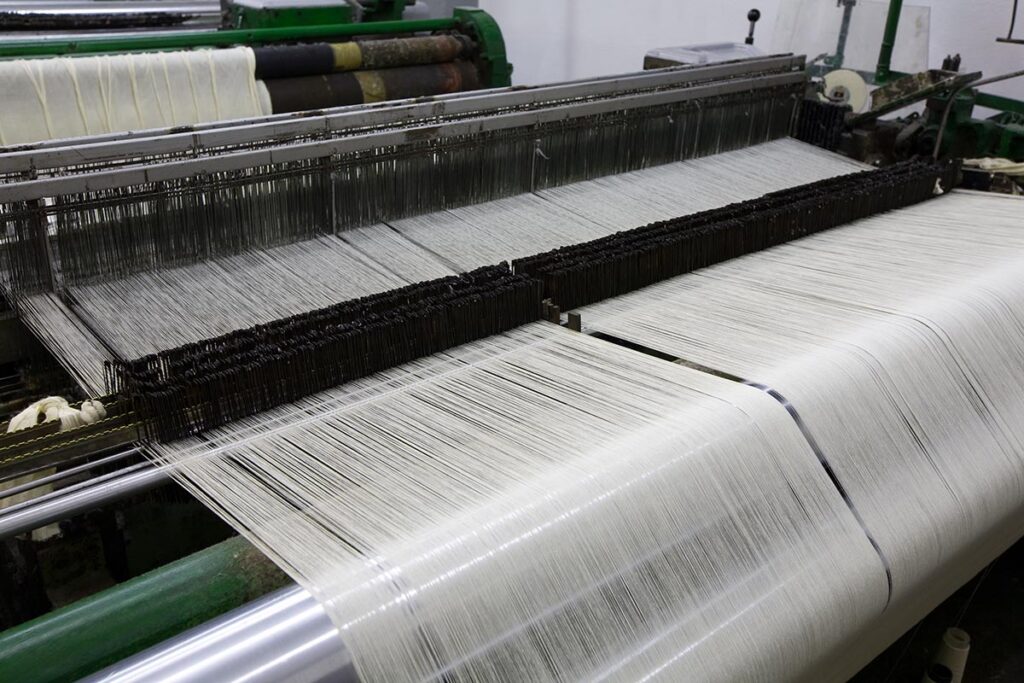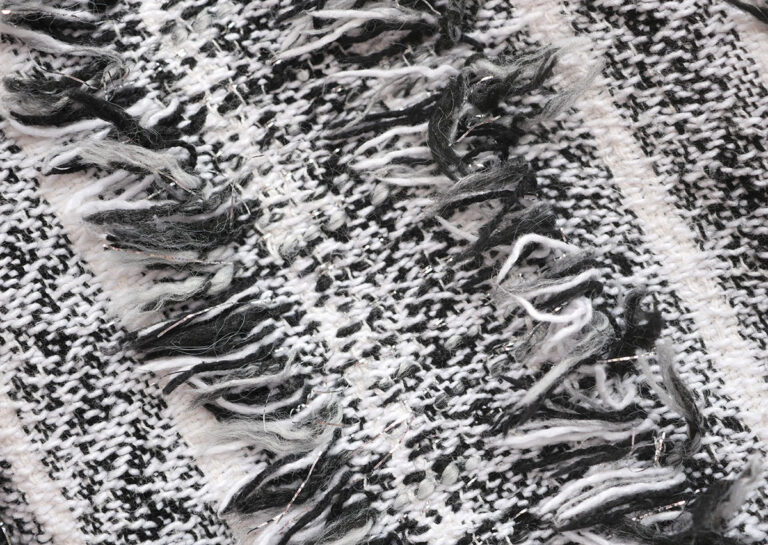How Is Cotton Made Into Fabric?
In the last month, we looked at the different types of fabric, different types of lace and man made vs natural vs synthetic fibres. Being that cotton fabric is very popular for making clothes, I thought it might be interesting for you to learn more about where cotton comes from and how cotton is made into fabric!
Cotton fibre is used in woven fabric, knit fabric and lace, and is also used to blend with other fibres to create fabrics that better suit a need – polycotton is a great example!
In fact, cotton is used as a fibre to create many different cotton fabric types!
What Is Cotton?
Cotton is a natural cellulose fibre, grown by a cotton farmer and comes from the cotton plant. Cotton fiber is fluffy, and grows in a ‘boll’ which protects the cotton seed inside.
Cotton is grown around the world with India currently being the biggest producer and the USA the biggest exporter.
There are some great resources which I will link to throughout this article that highlight the different exploitative and non-sustainable practices when it comes to the production of cotton – if you click on those I’ve set them to open in a new window so that you don’t lose your place here!
Some of the links in this article are affiliate links. This means that I may receive a fee at no extra cost to you if you purchase a recommended product.

Cotton Production Process
Cotton cloth is the product of a lengthy cotton production process – no sooner is one cotton crop harvested than the next is set.
“Those lovely, fluffy cotton bolls must be carded, spun, spooled and warped, slashed … drawn and woven or knitted into sized cloth before being sent off to the finishing mill. Then it needs to be kiered … to remove natural impurities, bleached to be made white, mercerised to give the fabric shine and strength, and to enable it to take dye, then printed or dyed and finally sized again.”
Lucy Siegle ‘To Die For: Is Fashion Wearing Out The World?‘
While the above is a simplified version of the cotton production process, it is an accurate representation of the excessive number of steps involved in turning cotton fibre into fabric that we can then use to create cotton clothing.
Once ready to harvest, the cotton boll opens and the whisps of fluffy cotton become visible. This natural fibre is then collected.
How Is Cotton Picked?

Cotton is picked differently around the world.
In developed countries, cotton is picked by machine and in developing countries, the harvest is still picked by hand.
And in Xinjiang in China, cotton is picked through forced labour (modern slavery). Sadly, 20% of the world’s cotton is picked by forced labour methods.
Machines Used In Picking Cotton

There are two machines used in the harvesting of the cotton plant:
1. Cotton Picker
The first cotton picker was invented in the 1920s!
Incredibly, this machine can pick the cotton from the boll and leave the plant undamaged – it has revolving prongs which pick the cotton from the bolls when ripe.
2. Cotton Stripper
A cotton stripper ‘strips’ the entire cotton boll along with its stalk, and is not only very invasive, but also incredbily wasteful, as many of the bolls end up being picked before they are ripe and are then discarded.
Picking Cotton By Hand

The process of picking cotton by hand is lengthy and painful. As the cotton bolls can ripen at different times, cotton pickers can be picking for several months.
In Uzbekistan, the cotton harvest is ‘picked courtesy of the forced labour of the country’s children and young adults’ (Lucy Siegle) for two months in the autumn.
Children are taken out of school during these harvest months and are forced to work from dawn until sunset with high daily quotas being set. And though they are said to be ‘paid’ for their work, when the fines are handed out for not meeting their excessive quotas, the reality boils down to child slave labour.
If you’d like to learn more, please do grab Lucy Siegle’s book ‘To Die For: Is Fashion Wearing Out The World’. It was one of the first books I read when I became aware of the levels of exploitation in the fashion industry and I return to it often.
I also have a guide featuring other sustainable fashion books here.
Carding Cotton Fibre

Once the cotton is picked is needs to be cleaned.
The cotton cleaning process removes any stalks, leaves and other matter that got caught up when being picked and depending on the textile mill processing it, can be quite a lengthy process!
Once clean, the carding machine – a roller with teeth! – is used to turn those short fibres into longer lengths by breaking up the fibre lumps and smoothing the fibre out.
Spinning The Cotton Fibre

The next step in making cotton fabric is to create the cotton yarn! On a commercial level the cotton fibre would be taken to a spinning mill so that the fibre can be spun into cotton yarn.
And of course, as well as yarn, cotton is also created in thread form too!
Creating Cotton Fabric
Of course, once the cotton is in a yarn form, we then get to the process of turning the yarn into fabric!
Weaving Cotton Cloth

Cotton cloth is created from weaving. A loom is warped up with cotton warp yarn and then woven with cotton weft yarn.
The more warp and weft threads, the tighter the weave of the cotton cloth. The fewer warp and weft threads the looser the cotton weave.
Modern weaving machines (above) can weave at an insanely high RMP whereas human hands throwing a shuttle back and forth is a lot slower. I know which process I prefer!

Knitted Cotton Fabric
Of course, cotton can also be knitted once the yarn is created. While not used as much in the home knitting community (wool and acrylics seem to be the preferred choice), the home sewing community loves knitted cotton fabrics.
If you want to learn more, I have a great guide to knitted fabrics here!
Cotton Fabric Examples
Fabric made from cotton comes in all weights. Here are five cotton fabric examples!
- Cotton lawn is a great lightweight cotton used for summer clothing
- Cotton shirting is more tightly woven than cotton lawn and is used… for shirts!
- Cotton drill is heavier than shirting and is often used for trousers
- Cotton denim (without any stretch factor added) can be woven in various weights (chambray, raw etc) and is used for many garment types from chambray shirts to raw denim jeans and jackets
- Cotton canvas is a tougher fabric made from woven cotton and is used for bags and outerwear
How do you feel about cotton? Is it a fabric that you love to use or one you’ve stayed away from when sewing? If the latter, for what reasons have you avoided using cotton and what have you replaced it with? Do let me know in the comments below!
And don’t forget to read my article on different types of cotton fabric for more in-depth information!







Hi. I discovered your interesting website when looking for a means of identifying names of fabrics. I have been sewing all my life, age 5 through 65 (in two weeks) and didn’t bother to remember what I was buying at the fabric store except for basic things like denim, sweatshirt fleece, quilting cotton, polyester etc.. My opinion of polyester is that if it touches my skin for a length of time I prefer it as an additive to a natural fiber. My jeans are alot more comfy with a little spandex in them! I know polyester is made from plastic which comes from oil. Someone once gifted my Mom (then in a nursing home and hardly able to speak for herself) a very pretty pair of pajamas, made of polartec fleece! I casually mentioned to one of my sisters who also saw it that I hoped no one ever brings me something like that when it is my turn because I know if I slept in something like that that I would wake feeling crappy and feverish! Good for outerwear and utilitarian stuff. Not to carry on here but I recently recall when my Dad used to occasionally ask for a snippet of the fabric I was cutting out on the kitchen table when I was a teenager. My Dad then held it over a gas stove burner and then showed me the melted result as to inform me that it was not cotton. At the time my reaction was just “uh-huh” and continued on. However when I made him shirts as gifts I made sure to use cotton. He knew the difference also because his mother was a dressmaker before we ever heard of the term “plus size” and instead of a tape measure she used newspaper strips snipping them as she “measured” people. Going to go check out your fabric guides now.
Hi,
You will be happy to know this about Uzbekistan’s cotton sector and forced labor:
““Our collaboration has yielded good results – because after 7 years, this year’s report shows that Uzbek cotton is free from systemic child labour and systemic forced labour,” said ILO Director-General Guy Ryder.”
The quote comes from this website that describes the reform, which began around 2015: https://www.ilo.org/global/about-the-ilo/newsroom/news/WCMS_838396/lang–en/index.htm
The world is always changing, mostly for the better. There is always hope in the future.
Take care,
S. H.